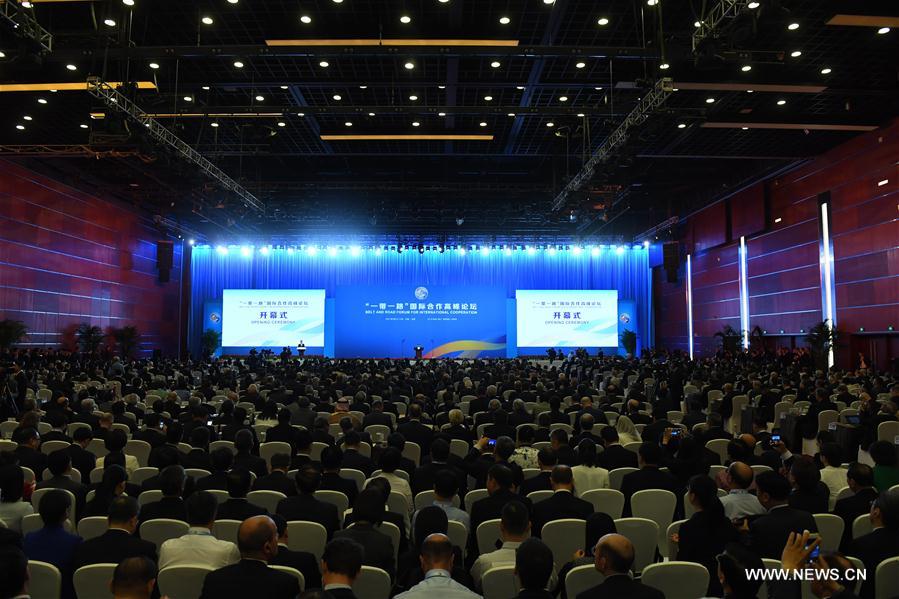
The Belt and Road Forum (BRF) for International Cooperation opens in Beijing, capital of China, May 14, 2017. (Xinhua/Zhang Duo)
BEIJING, May 16 (Xinhua) -- During the Belt and Road Forum for International Cooperation that ended Monday, China showed willingness to share its development experience for the benefit of all in need.
From the long list of outcomes of the forum, it is not difficult to see that China is sharing what has proved effective, and that China knows the the Belt and Road means concerted efforts.
INFRASTRUCTURE INVESTMENT
The Chinese government knows better than anyone the importance of investing in infrastructure if economic growth is to be sustained. Furthermore, it knows that the only purpose of growth is to improve people's lives.
In the first four months of this year, infrastructure investment rose 23.3 percent, faster than an 8.9 percent growth for overall fixed-asset investment, data from the National Bureau of Statistics showed.
China's transportation network has been constantly growing, with the world's longest stretches of high-speed rail, superhighways and urban railways in operation.
That is part of priority of the Belt and Road Initiative. Connectivity removes the bottlenecks that hamper development. Connectivity is crucial for the development momentum that improves people's lives.
Participants in the forum agreed that cooperation under the Belt and Road Initiative should make connectivity the priority and be driven by major projects and programs.
They agreed to advance cooperation in areas such as roads, railways, ports, aviation, oil and gas pipelines, electricity and telecommunications to build interconnected networks.
China had signed more than 130 bilateral and regional transportation agreements with countries involved in the Belt and Road over the past three years, all in the name of improved connectivity, the Ministry of Transport said in mid-April.
The list of deliverables released Monday included 14 new outcomes in connectivity.
STREAMLINING APPROVAL
China has done all it can to streamline administrative approval and delegate power to lower levels, reducing institutional transaction costs, and plans to do more
In 2016 alone, the government canceled 165 items, overhauled and standardized 192 items, and removed 220 items of approval and accreditations for professional qualifications.
More than 100 countries and international organizations will surely encounter differences in policy and approval procedures, which will hinder investment and trade cooperation. That is part of the reason why policy coordination and trade connectivity are the priorities of the initiative.
Chinese customs signed cooperation documents with Kazakhstan, the Netherlands and Poland on exchange of information, recognition of inspection results and assistance in law enforcement.
CAPACITY COOPERATION
After decades of development, China has advantages in capacity, technology and equipment in many industrial areas.
In pushing forward the initiative, international cooperation on industrial capacity has been important to all involved.
From 2013 to 2016, Chinese companies invested more than 60 billion U.S. dollars in countries along the Belt and Road. with capacity cooperation among more than 30 countries.
By the end of last year, Chinese companies had built 56 economic and trade cooperation zones along the Belt and Road, with total output of more than 50 billion dollars, generating more than 1.1 billion dollars in tax revenue and creating 180,000 local jobs.
High-speed trains, electricity and electronics equipment, construction machinery and Chinese ships have become the hallmarks of China's manufacturing sector in international capacity cooperation.
Attendees of the forum's Leaders Roundtable agreed to build economic corridors, economic cooperation zones and industrial parks.
Advancing cooperation on industrial capacity and equipment manufacture will bring better, faster growth to the real economy.




